Conclusion
Credit: UNICEF / Biju Boro
Significant progress has been made towards achieving gender parity in education, a hallmark of how international commitments can prompt national action. However, this report has shown that some of the progress could prove to be a mirage. In some cases, parity on average masks continuing disparity between and within countries. More worryingly, progress in visible areas, such as enrolment, stands in contrast with inaction in less visible areas. Few teachers receive education on how to be responsive to gender issues in the classroom. Some countries still ban pregnant girls from school. In the few countries with disaggregated data on head teachers by sex, high levels of disparity emerge in terms of women’s access to leadership positions in education. In difficult contexts, including those related to migration and displacement, girls and women lose out due to long-standing negative and harmful norms.
Using its broad monitoring framework for gender equality in education, this report has aimed to bring together the various dimensions of the quest for gender equality, inside and outside education, looking at inputs, outputs and outcomes. While data remain sparse in several areas, the report has tried to clearly demarcate what progress in assorted domains would look like. The use of this approach aims to influence countries to look beyond simple parity indices that sometimes remain at the surface of the core issues around gender equality in education. The review of donor projects and programmes highlighted an increased degree of awareness among agencies that interventions to help achieve gender equality need to be sophisticated in their design and implementation.
Aside from this degree of sophistication, the report emphasized the following questions: Are aid-funded programmes adequately preparing the ground for successful initiatives to be taken up by governments? And in those cases where programmes successfully meet the conditions for scaling up, do governments take note and try to incorporate them into national policies? While more evidence is needed to do justice to these questions, there are indications that both sides need to do better. Few donor programmes are explicitly designed to be scalable in terms of unit costs, theory of change and evaluation of results. And in the cases where these conditions are met, few governments seem to be ready and willing to transform pilot projects into nationwide programmes.

